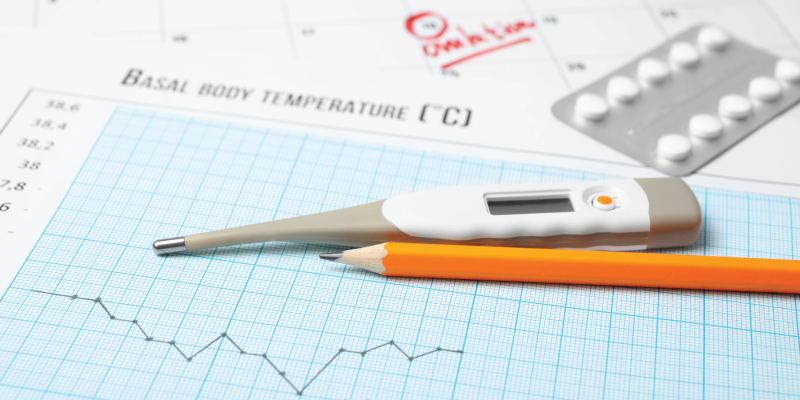Trying to Conceive: Ovulation
So you’ve decided to get pregnant. This is one of the most exciting decisions for a couple to make, but isn’t always an easy road. We’re breaking down the ways to try and make the path to parenthood as easy as possible. The important thing is to realize that no matter how quickly or slowly it happens, you are not alone. So with that in mind, let’s chat about ovulation.
The best thing you can do is to know and track your cycle. It’s important to know and understand your body so that you can make sure you’re trying at the times you’re the most fertile. Ovulation is the one time a month your body releases an egg for fertilization. Around this time is the best time for you and your partner to light that flame. But how could you possibly know when that time is?
Knowing Your Cycle
Unless you already know your cycle like the back of your hand, the best way to learn it is by keeping a menstrual calendar (ideally for a few months) to get an idea of what’s normal for you. The “average” menstrual cycle lasts for about 28 days, which would most likely mean you’d be ovulating on day 14. If you need some additional help tracking your ovulation and cycle, these fertility tracking products can help. Simply input the date of your last period and your average cycle length, and you’re set.
Ovulation Tests
If you’re looking for a more physical clear-cut answer, you can pick up ovulation prediction tests at most drugstores in the family planning aisle. These work very similarly to pregnancy tests–you urinate on the stick and wait. Before long, it will reveal whether your body is ovulating or not. These do require that you do them daily to make sure you don’t miss the date.
Track Your Fluids
Your cervical mucus (the sticky fluid you notice coming from your cervix) changes consistency throughout your cycle. The slicker and more noticeable it gets, the more fertile your body is.
Watch Your Body Temperature
Your temperature can also be a great indicator that you’re ovulating. You’ll want to track what’s called your basal body temperature–this is the temperature of your body when you are fully at rest. When ovulating, your ovary releases an egg, which causes your body to produce the progesterone hormone, which in turn raises your temperature.
Try tracking your temperature every morning before getting out of bed. This will give you a clear idea of your cycle’s pattern and how it can help you track your most fertile days.
Talk With Your Medical Provider
Sometimes it’s hard, exhausting and stressful to pick up on your body’s indicators or find the exact time of ovulation. If you’re struggling, don’t hesitate to ask your medical provider for assistance. A professional will always be willing to assist in finding your fertile days and answering any questions about your medical history that could factor in.
We know this can be a confusing and stressful time, especially if it doesn’t happen as quickly as you expected. But remember, you aren’t alone, and there are a lot of resources available to help you. And of course, we’re always here for you!
Join the other 1,000,000+ expecting mamas who love Bump Boxes.


















